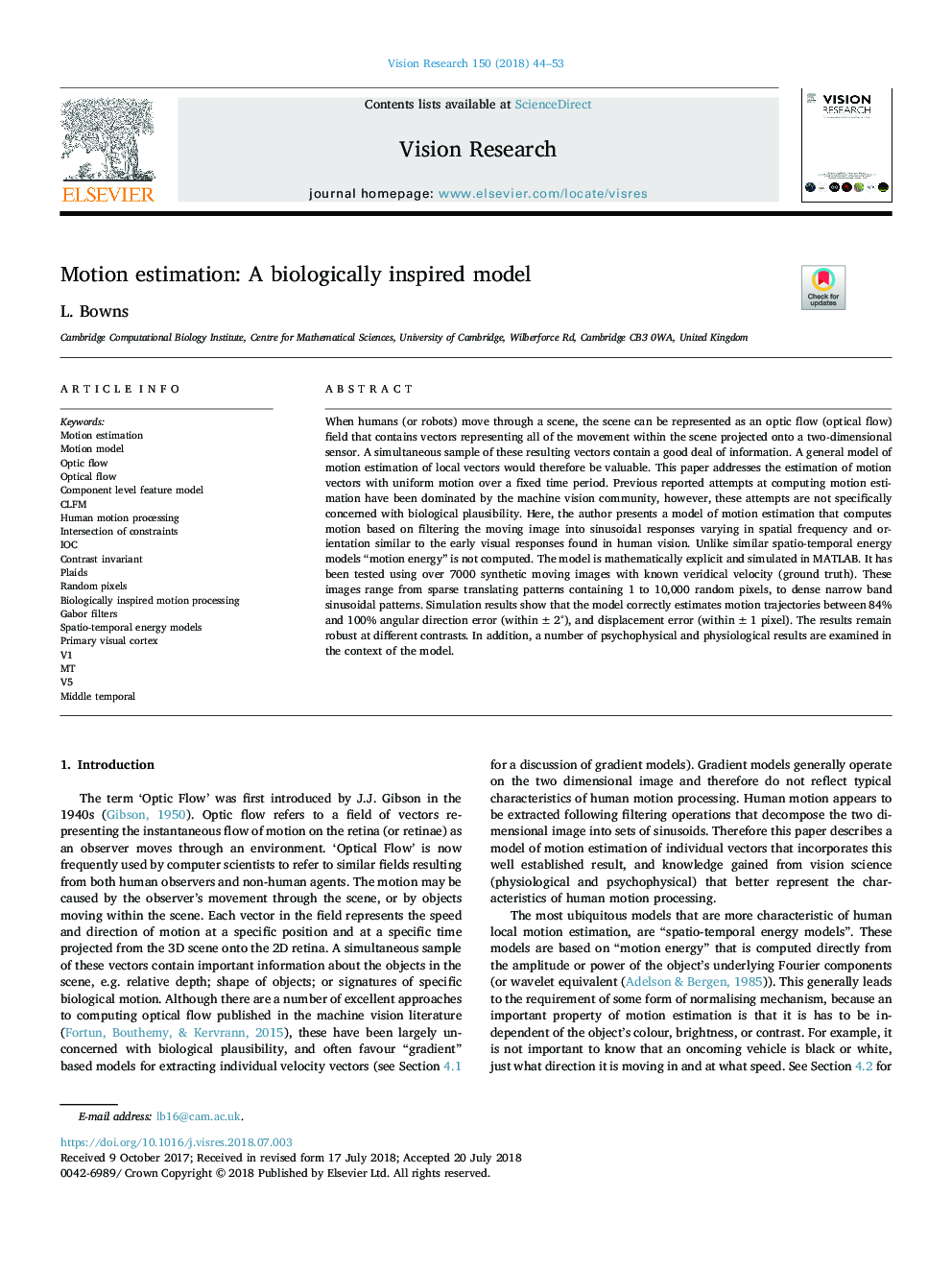| کد مقاله | کد نشریه | سال انتشار | مقاله انگلیسی | نسخه تمام متن |
|---|---|---|---|---|
| 8795277 | 1603150 | 2018 | 10 صفحه PDF | دانلود رایگان |
عنوان انگلیسی مقاله ISI
Motion estimation: A biologically inspired model
ترجمه فارسی عنوان
برآورد حرکت: مدل الهام گرفته از بیولوژیکی
دانلود مقاله + سفارش ترجمه
دانلود مقاله ISI انگلیسی
رایگان برای ایرانیان
کلمات کلیدی
موضوعات مرتبط
علوم زیستی و بیوفناوری
علم عصب شناسی
سیستم های حسی
چکیده انگلیسی
When humans (or robots) move through a scene, the scene can be represented as an optic flow (optical flow) field that contains vectors representing all of the movement within the scene projected onto a two-dimensional sensor. A simultaneous sample of these resulting vectors contain a good deal of information. A general model of motion estimation of local vectors would therefore be valuable. This paper addresses the estimation of motion vectors with uniform motion over a fixed time period. Previous reported attempts at computing motion estimation have been dominated by the machine vision community, however, these attempts are not specifically concerned with biological plausibility. Here, the author presents a model of motion estimation that computes motion based on filtering the moving image into sinusoidal responses varying in spatial frequency and orientation similar to the early visual responses found in human vision. Unlike similar spatio-temporal energy models “motion energy” is not computed. The model is mathematically explicit and simulated in MATLAB. It has been tested using over 7000 synthetic moving images with known veridical velocity (ground truth). These images range from sparse translating patterns containing 1 to 10,000 random pixels, to dense narrow band sinusoidal patterns. Simulation results show that the model correctly estimates motion trajectories between 84% and 100% angular direction error (within ±2°), and displacement error (within ±1 pixel). The results remain robust at different contrasts. In addition, a number of psychophysical and physiological results are examined in the context of the model.
ناشر
Database: Elsevier - ScienceDirect (ساینس دایرکت)
Journal: Vision Research - Volume 150, September 2018, Pages 44-53
Journal: Vision Research - Volume 150, September 2018, Pages 44-53
نویسندگان
L. Bowns,
